Digging Deeper Into the Archives
The enthralling way discovery leads to ever more questions, many of which can never be answered.
My Grandfather, Fred Yamaguchi, took photos while he was unjustly incarcerated in the Rohwer concentration camp during World War II. I always knew this — he spent his entire career as a photographer — but it wasn’t until the last couple of years when I began researching this part of my family’s history that I realized the extent of his photography work during this pivotal time in his life, when he was just in his early 20s.
It turns out that he was running a photography studio in the camp, along with a group of incarcerees about his age, some of whom were family members. This information was right in front of me all these years, because in my Grandparents’ camp photo album, there is a photo of him with his fellow photo studio workers right in front of Rohwer Photo Studio (I shared this story in my Tadaima presentation). I just never connected the dots. But what this means is that he took many of the portraits and other types of photos taken at Rohwer, which would likely be in the family photo albums of many others who were incarcerated.
And while there is little to no mention that I can find of Fred Yamaguchi or the Rohwer Photo Studio in any of the museum exhibits, websites, or books about and showcasing camp photography, I did discover last year that the National Archives holds a collection of Fred Yamaguchi’s photos as part of the larger War Relocation Authority’s (WRA) records.
Currently, these photos are not scanned and available to view through the National Archives website. But I have now been able to visit the Still Picture Branch at the Archives in College Park, MD, twice, to view and scan these photos. (Huge thank you to the archivists at the National Archives — they have been incredibly helpful and I truly appreciate all the amazing work that they do).
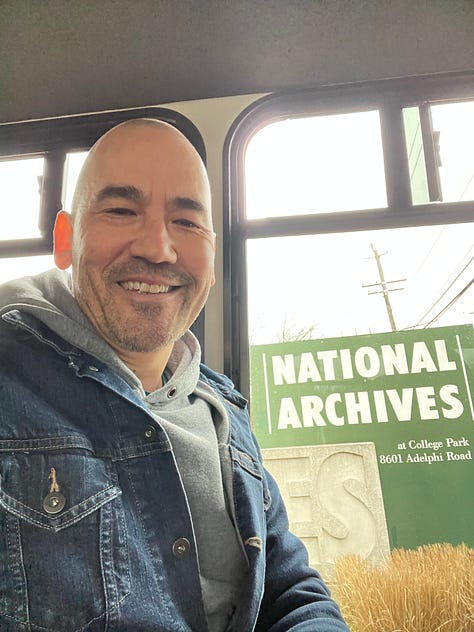
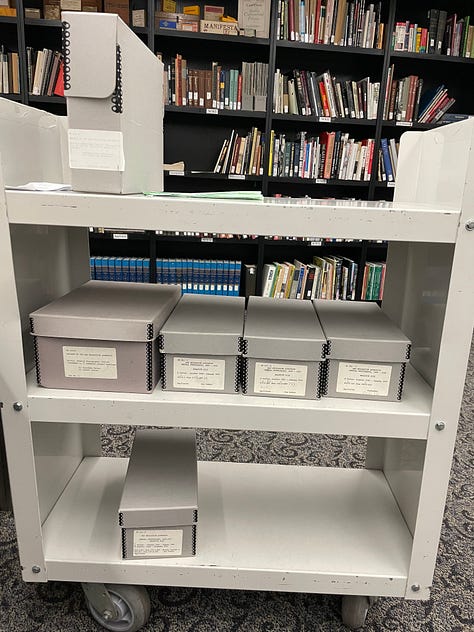
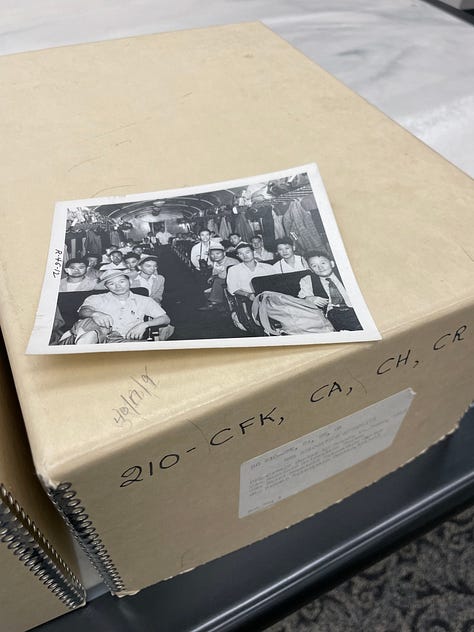
This has been thrilling, deeply meaningful, and truly enlightening. I’ve made so many more discoveries, and for every discovery, there are countless new lines of inquiry. The hard truth is that there are many aspects to these photos, not to mention the larger history of the incarceration experience, that have been lost to time. The microcosm of this personal research project that involves family history — connected to and in the context of a significant historical record — has me completely rethinking how I process the histories we are told, most especially those that delve into the stories and records from even the not-so-distant past.
I am going to have much more to share on this project in future newsletters (and beyond), but for right now, I’d like to just show you two of the photos I scanned (one being at the top of this piece). This is, after all, just a newsletter (with size limits). These photos deserve to be presented properly… more to come on that!
THE PHOTO I SHARED ON THE “DAY OF REMEMBRANCE”
I was moved, and inspired, by all the activity and sharing on the “Day of Remembrance” (February 19). I shared a photo from my Grandparents’ camp album, taken by my Grandfather:
Most of the photos in this album are of family and friends. Very few are images of just the camp setting, and I believe this is the only one where you can see a guard tower. The cut down trees and the darkened clouds present a very different mood. It’s an ominous photo, and carries more than enough weight to make its point, despite being one of only a few images like it in an album of hundreds of photographs.
NEW ISSUE OF KIOKU
The second issue of Kioku — “a Japanese-American scrapbook” in the form of a zine — is now available. I mentioned this excellent project from Katey Terumi Laubscher (Editor-in-Chief) and Finn Kaoru Laubscher (Creative Director) in the first issue of Concentrational Resonance, and it’s wonderful to see a new issue is now making its way out into the world. I just got my copy and and I continue to be impressed with the eclectic collection of photos, art, and writing. I was especially struck by Kylie Bernard’s multimedia collage, “Matsuko, Child of Pine,” as well as by Asa Nakagawa’s poem “To Soothe A Restless Spirit.” But the publication is a beautiful presentation across the board. I think many of you will know what a zine is, but if not, think of it as a rough cut magazine, a collection of writings and art that is produced through a copy machine and bound with staples. Kioku is on the higher end of the zine spectrum — not quite as slick as a traditional magazine, but with all the heart of a zine, with the zine publishers and contributors sharing their essays, stories, poems and art in a more raw and honest way — more like letters to a friend than an overly polished magazine or journal. I really recommend ordering a copy. In true zine form, it is self-distributed, through the mail. Learn how to get your copy at kiokumag.com.
THE LITERATURE OF JAPANESE AMERICAN INCARCERATION — ALSO GOING TO BE AVAILABLE AS AN AUDIOBOOK
I was excited to see this recent Instagram post from Frank Abe about his forthcoming anthology (with Floyd Cheung) showcasing writings (some translated for the first time) from the Japanese American incarceration during WWII: the collection will also be available as an audiobook — featuring an “A-list of Asian American actors and poets,” no less. Learn more about this important book here, being published by Penguin Classics on May 14, 2024, and make sure to pre-order!
MARY MON TOY THEATRICAL COLLECTION
Author Marnie Mueller recently posted about the Mary Mon Toy Theatrical Collection, a virtual archive hosted at Densho that she helped create, along with Mary Mon Toy's nieces, Lori Watanabe Saginaw and Wendy Watanabe. (Mary Mon Toy, who was incarcerated in the Minidoka concentration camp in Idaho during WWII, was a singer and actress in nightclub and Broadway productions, as well as television shows.) The collection was something Mueller developed as she researched and wrote her recently published book, The Showgirl and the Writer. View the collection here, and learn more about Marnie’s book — a hybrid memoir/biography about her friendship with Mary Mon Toy — by visiting her website.
PODCAST RECOMMENDATION: CODE SWITCH
My friend Sean Johnson recently let me know about a fascinating episode of the Code Switch podcast that explores the musical legacy of the Japanese American incarceration experience during WWII. It’s a great episode, and provided me with some incredible insights into the music during the time of the camps, as well as contemporary musical projects that pay tribute to and are inspired by the camp experience. It features artists Kishi Bashi, Erin Aoyama, and Mary Nomura, and was reported by Jess Kung. I was especially thrilled to hear how Kishi Bashi’s Omoiyari project impacted Mary Ishimoto Morris, who I have had the good fortune to meet through our work together on the Jerome Rohwer Pilgrimage planning committee. Give the episode a listen.
SAVE THE DATE PILGRIMAGE CALENDAR
These are confirmed dates for the 2024 pilgrimages. Added from the last newsletter is the Minidoka Pilgrimage, which is scheduled for July 4-7, 2024.
April 27, 2024 (always the last Saturday in April) — Manzanar Pilgrimage
May 2-4, 2024 — Topaz Art Pilgrimage
May 17-19, 2024 — Amache Pilgrimage
June 5-8, 2024 — Jerome Rohwer Pilgrimage (note: I am on the planning committee for this one, so do let me know if you have any questions).
July 4-7, 2024 — Minidoka Pilgrimage (Here’s the eventbrite registration page)
July 5-8, 2024 — Tule Lake Pilgrimage
July 25-27, 2024 — Heart Mountain Pilgrimage
Note that JAMP (Japanese American Memorial Pilgrimages) keeps an extensive pilgrimage calendar updated here — bookmark it!
THANK YOU FOR READING AND SUBSCRIBING
If you haven’t yet subscribed, you can do so by clicking the button below — I will be sending a monthly update.
If you’ve got a camp/pilgrimage-related resource or project or event that should be featured in a future newsletter, please leave a note in the comments, or simply reply to this email. Always wonderful to further connect with the Japanese American community and it would be great to hear from you.
And finally, thank you for all the wonderful feedback and suggestions, and for spreading the word about this newsletter project.
Note that this newsletter is free, but if you want to show your support, please consider donating to my fundraising page for the upcoming Jerome Rohwer Pilgrimage. All donations go to support the programming, speaker honorariums, and logistics, as well as the registration fees for elders.
—
ABOUT THE WRITER OF THIS NEWSLETTER
My grandparents (and their families) were incarcerated at the Rohwer Concentration Camp in Arkansas during WWII. This is family history that I’ve known my entire life, but it wasn’t until I visited the Rohwer and Jerome sites with my wife in the summer of 2021 that I started to fully grasp the immensity of this story — mostly how little I really knew or understood. Since then, I’ve had the opportunity to visit more of the sites (Topaz, Tule Lake, Minidoka), connect with others in the Japanese American community, and join the Jerome Rohwer Pilgrimage Planning Committee. Concentrational Resonance is a project-in-progress where I am sharing this ongoing journey of discovery. You can learn more about me at my website — jeffreyyamaguchi.com.
Site of the Rohwer concentration camp in Arkansas. Photo taken June 2021. See more of my photos here.


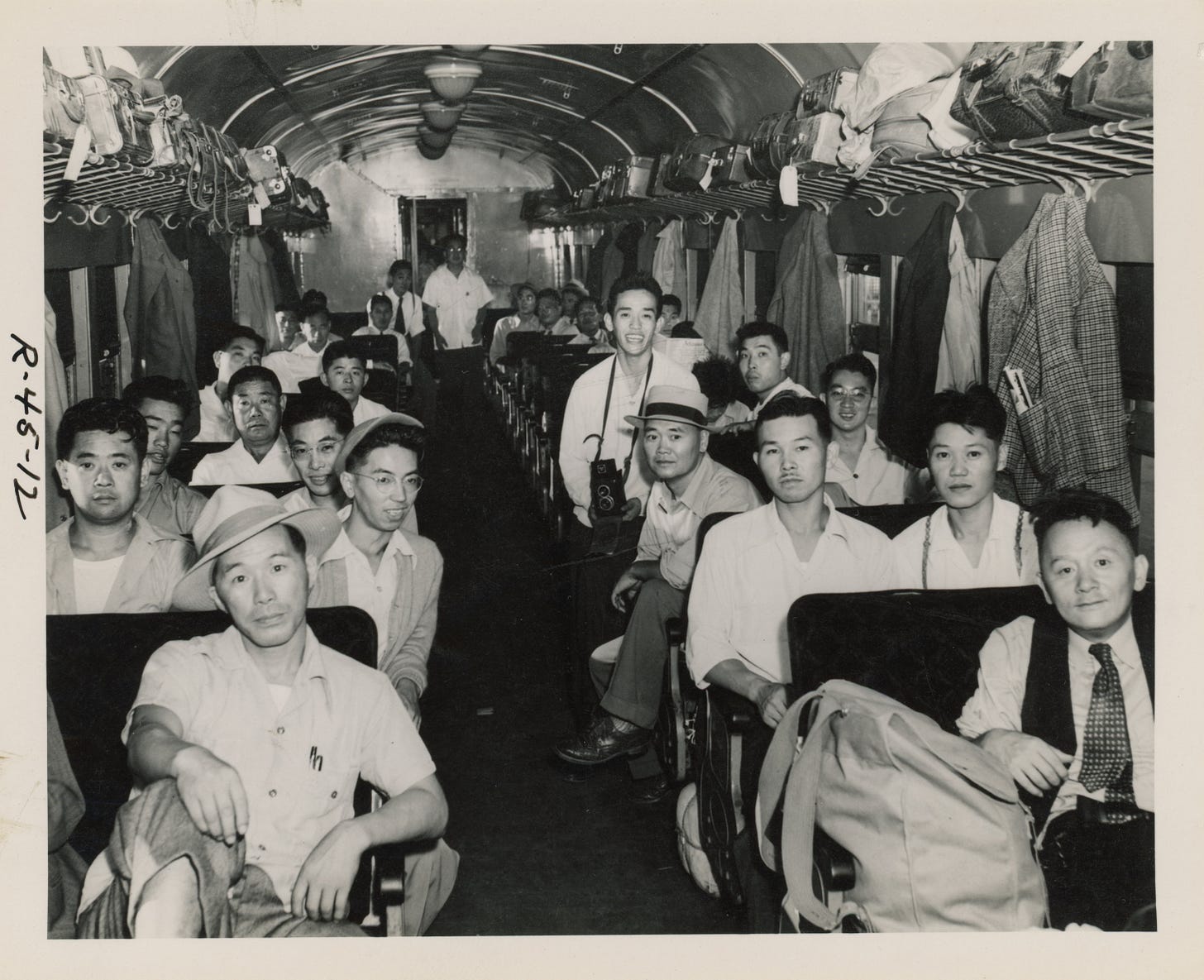
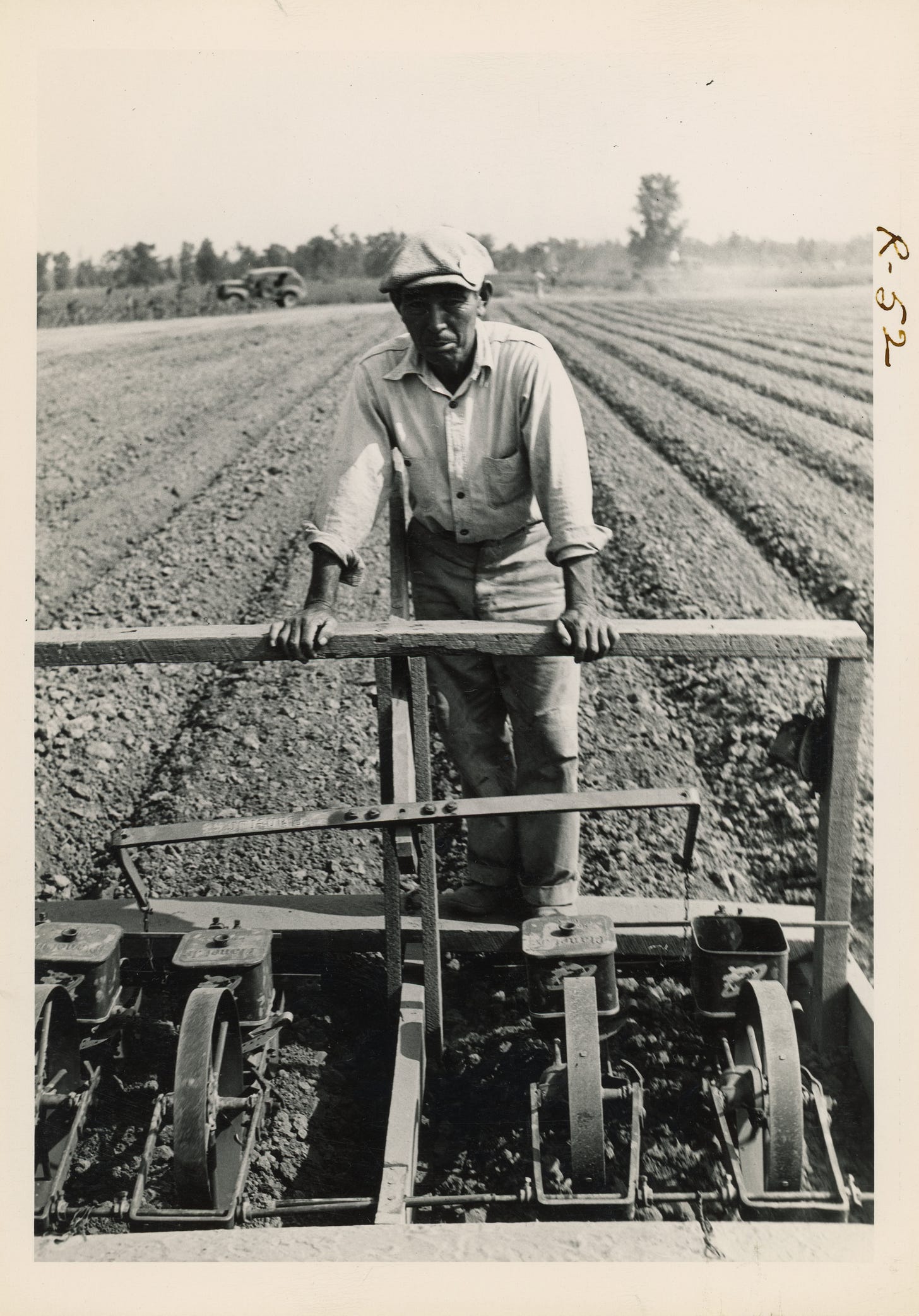
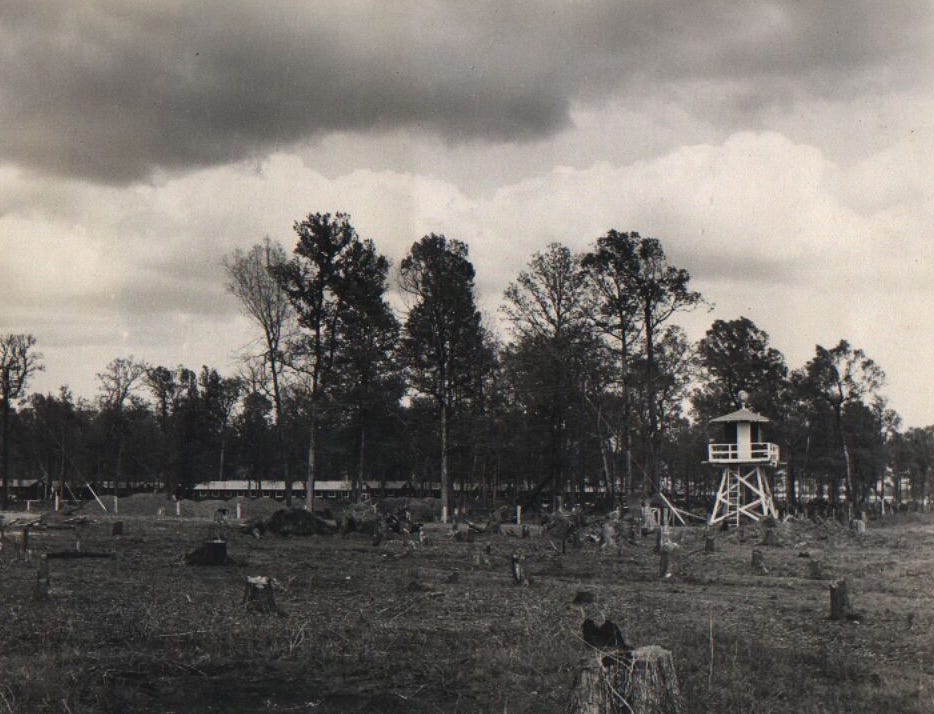
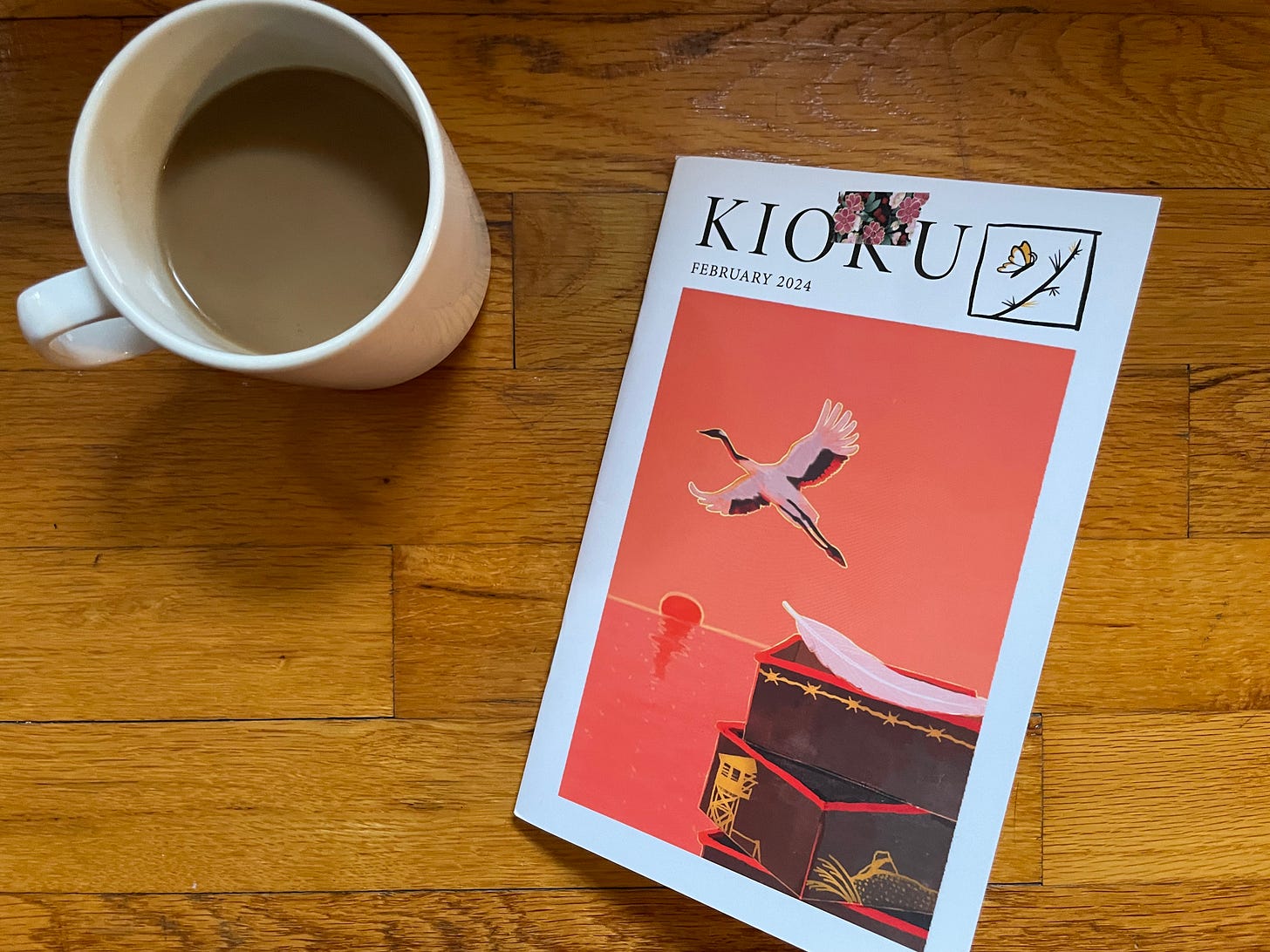
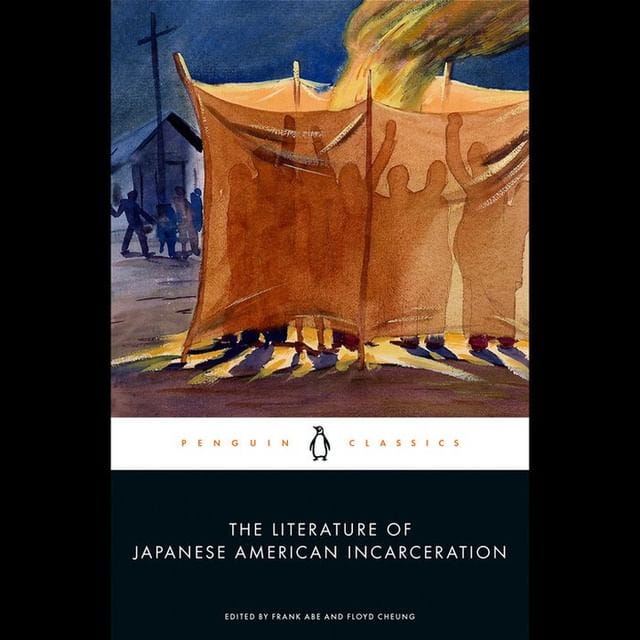

Dear Jeffrey, what fabulous research. And thank you again from mentioning my book and Mary Mon Toy's archive. I'm thrilled as she would also be to have such amazing notice of her at long last!! Marnie Mueller
Jeff, how fantastic you were able to visit the archives and see your grandfather's photos. Another treasure trove. You could probably spend days there and never come up for air! Sounds as if photos in your family album belong in the archives, too.
Always more questions leading to trails that are yet to be discovered.